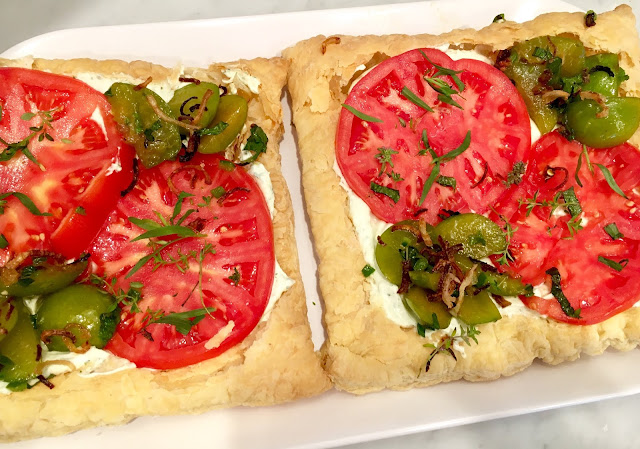 Chef-owner Fergus Henderson is renowned among a certain subset of chefs, particularly those Bourdain-loving, tattooed proponents of the nose-to-tail cooking and eating ethos, a trend for which Henderson is often given credit for launching. It's this very British, postwar, waste-not-want-not mentality that birthed Henderson's kind of cooking, and it remains a big hit among London diners, international visitors, and foodies who adore getting their noses into offal and bone marrow and all kinds of savory, meaty goodies and traditional dishes.
Chef-owner Fergus Henderson is renowned among a certain subset of chefs, particularly those Bourdain-loving, tattooed proponents of the nose-to-tail cooking and eating ethos, a trend for which Henderson is often given credit for launching. It's this very British, postwar, waste-not-want-not mentality that birthed Henderson's kind of cooking, and it remains a big hit among London diners, international visitors, and foodies who adore getting their noses into offal and bone marrow and all kinds of savory, meaty goodies and traditional dishes.The space itself is part laboratory, part sterilized slaughterhouse in feel. It's industrial but somehow upscale, too. White, soaring ceilings, skylights, and dark wood furniture set this tone, with pendant lamps and a definitive lack of cover from linens, carpets, and the like. The staff is helpful and professional. And the menu is unlike most I've come across in my many years in the food industry, and my exhaustive travels. Take a gander at the current lunch menu, for example, which reads as colorful, properly British, and almost Dickensian:
|
|
|
|
| Celeriac Soup | 8.50 | ||||||||||||||||||||
| Brown Shrimp and White Cabbage | 9.80 | ||||||||||||||||||||
| Kohlrabi | 8.90 | ||||||||||||||||||||
| Crispy Pig Cheek and Dandelion | 11.80 | ||||||||||||||||||||
| Brown Crab Meat on Toast | 10.50 | ||||||||||||||||||||
| Cold Roast Dexter Liver, Radishes and Anchovy | 9.50 | ||||||||||||||||||||
| Langoustines and Mayonnaise | 18.70 | ||||||||||||||||||||
| Roast Bone Marrow and Parsley Salad | 10.50 | ||||||||||||||||||||
| Hare Saddle and Swede | 24.80 | ||||||||||||||||||||
| Witch Sole and Tartare Sauce | 25.50 | ||||||||||||||||||||
| Roast Squash, Pickled Walnut and Goat's Curd | 15.80 | ||||||||||||||||||||
| Kid Liver, Lentils and Mustard | 19.80 | ||||||||||||||||||||
| Snails, Sausage and Chickpea | 22.80 | ||||||||||||||||||||
| Lamb Tongues, Butter Beans and Green Sauce | 21.50 | ||||||||||||||||||||
| Smoked Eel, Beetroot and Horseradish | 25.20 | ||||||||||||||||||||
| Braised Ox Kidney, Bacon and Mash | 19.80 | ||||||||||||||||||||
 Radishes with anchovy and butter. Crispy pig cheek and dandelion greens. Lamb tongue with butter beans and green sauce. Hare, quail, snails, eel, ox kidneys. These are the most important components of a St. John menu: the forgotten dishes and the flavor pairings ranging from old school classic to unusual umami bombs. The off-cuts. It's all given new life in this chef's hands. And, the place is always and still very buzzy, which makes it fun. (Offally fun? Punny? OK I'll stop...)
Radishes with anchovy and butter. Crispy pig cheek and dandelion greens. Lamb tongue with butter beans and green sauce. Hare, quail, snails, eel, ox kidneys. These are the most important components of a St. John menu: the forgotten dishes and the flavor pairings ranging from old school classic to unusual umami bombs. The off-cuts. It's all given new life in this chef's hands. And, the place is always and still very buzzy, which makes it fun. (Offally fun? Punny? OK I'll stop...)There's also reverence given to vegetables, by themselves. In the late spring, I enjoyed a mix of artichokes, lima beans, greens, and other spring offerings, lightly stewed. You can get salads, and in cooler months, you find interesting veggies like kohlrabi, cabbage, roasted squash of various varieties, and soups made of celeriac. You can also find traditional smoked seafood and preserved and pickled foods, as has been the culinary way in this part of Europe for centuries.
It's also nice to see that the meal can be rounded out by a significant dessert menu and pastry program, with breads savory and sweet, famous English puddings, and gorgeous local cheeses. There are standards like chocolate mousse and rice pudding, as well as madeleines baked to order (and also to go). But the oh-so-English desserts are what perfectly finish off a meal here: spotted dick, brown bread and marmalade ice cream, ginger loaf with butterscotch sauce. It's not for everyone, that's for sure. Nothing about this place easily appeals to the masses, though it is certainly an Everyman-style menu. But Chef Fergus Henderson pulls it off with aplomb, with skilled technique, a mix of imagination and nostalgia, and a wink and a nod to British culinary tradition, such as it is. Together, the mix works and is what makes dining at St. John a perennial pleasure.
St. John Restaurant
26 St. John Street, Clerkenwell
London EC1M4AY
+44 20 7251 0848
www.stjohnrestaurant.com










































































